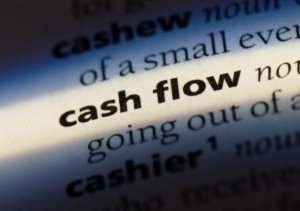By Trinity Van, PayNearMe
When low-income individuals start businesses, the first hurdle they face is securing a loan. The second is getting the loan payments disbursed quickly and safely, preferably in the same account they use to pay their business expenses.
By design, many small business loans get disbursed not in one big check but in smaller controlled disbursements. This allows lenders to hold businesses accountable and encourages owners to use their and investors’ money rather than relying only on the funds from the loan.

However, that can be a challenge for businesses owned by low-income individuals, who typically have less cash in reserve and may not have any investors. Those entrepreneurs need to know their loan disbursements will arrive quickly, reliably and safely and be accessible immediately upon disbursement to pay expenses.
Grameen America, a national nonprofit microfinance organization, meets that need by providing digital disbursements. In 2021, PayNearMe worked with Grameen to offer its borrowers the option to get funds deposited directly to debit, making the money accessible the same day. Fast forward two years: Grameen has digitally disbursed more than $1 billion to low-income entrepreneurs.
As lenders work to digitize their operations, digital disbursements are trending. Not only are they valuable to low-income borrowers, particularly when it comes to small businesses and microloans, but they also benefit lenders.
Digital disbursements accelerate availability of funds

Many small business startups exist on razor-thin operating margins, making them especially vulnerable to interruptions in cash flow. According to Semrush, 43% of SMB owners claim their biggest problem is paying operating expenses. They need to know when a disbursement is coming so they can plan their outlays accordingly.
Digital disbursements deliver funds quickly, so business owners can access instant funding right when needed, deposited directly into the account they use to pay their expenses. With Grameen, for instance, many business owners value having disbursements go directly into their bank accounts and pushed through their debit card, making money available immediately for payroll, procurement, rent and other necessary expenses. There are no delays caused by having to wait for a check, deposit it into their bank account, and wait again for it to clear, or transfer money from one account to another.
Digital disbursements improve financial inclusion, money management

According to the FDIC, an estimated 4.5% of US households are not connected to the banking system, often because they don’t have the minimum amount of money required to sustain an account without incurring fees. However, being connected to a bank has numerous advantages, especially for low-income business owners. It gives them access to financial services vital to building wealth. Also, when money is in a bank account, business owners can more easily buy supplies or pay employees without holding onto large sums of cash.
Additionally, banked borrowers have greater rates of financial success. In one international study of female microloan borrowers, those who received mobile disbursements made 15% higher profits and had 11% higher values of business capital than those who received their disbursements through traditional means. The women said they experienced less pressure to share the business’s profits with others or spend it on household expenses when deposited directly into their business operations bank account.
Digital disbursements prioritize time, convenience, safety

Some low-income business owners have barriers to traditional banking, such as finding time and transportation to visit a bank in person. That can delay access to their funds and hamper their ability to cover business expenses on time. Digital disbursements eliminate those hurdles by making loan funds accessible electronically—no trips to the bank are required.
Additionally, digital disbursements keep funds safer, eliminating the risk of a check getting lost in the mail or stolen out of a mailbox. Assuming lenders work with an experienced payments technology provider, fund transfers and customer data will also protect against cyber-attacks. That’s a significant stress reducer for both lenders and borrowers.
Lenders benefit too
Digital disbursements can benefit lenders as well. Offering digital disbursements saves lenders the cost of printing and mailing checks. It makes lenders more competitive in the small business or new business lending market. Additionally, the same digital banking integration can be used in other business areas, including loan repayment, escrow refunds, insurance claim payouts and more.
Customers have become used to making and receiving electronic payments in other areas of their lives. Lenders who incorporate digital disbursements will earn their customers’ loyalty by making the entire payment experience—from payout to payment—fast, easy and seamless. That’s good news for those lending organizations as their borrowers’ businesses grow.
About the Author

Trinity Van is a Senior Director of Product at PayNearMe with ten years of experience in the payments industry. Her commitment to defining the customer’s journey and simplifying the consumers’ payments and disbursement experience is evident in every aspect of her work. In her free time, Trinity enjoys being a foodie, traveling with her family, spending time with friends, and exploring the great Colorado outdoors.
Recent PaymentsNEXT news:
Fighting friendly fraud without sacrificing customer experience








LET’S CONNECT